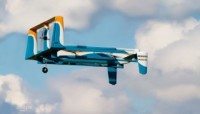By Benjamin Horvath

And earlier this year, Amazon announced more details regarding its plan to deliver packages via drone, a plan with which it continues to move forward. The FAA even allows individuals to fly drones for recreational use, provided they comply with certain safety regulations.
The tower industry— seldom out of step with the fast beat of technological innovation—has begun to make increasing use of drone technology. In an interview with Inside Towers, Keefe Guy of Signal Hunters, a subset of the wireless systems integrator CellAntenna, discussed how drone technology has become a staple of the company’s signal detection and mitigation services.
“What differentiates from our competition is that we’re marketing our services not just as a traditional signal detecting company where we’re driving around with a spectrum analyzer in a vehicle on the ground,” Guy says. “[Drone technology] gives us the opportunity to isolate the [signal] interference much more precisely and then mitigate the interference for the client.”
In addition to signal detection and mitigation services, Guy says Signal Hunters plans to expand its use of drone technology to provide tower inspections, audits or site photo packages.
Michael Horvat, an electrical engineer for CellAntenna, the company to which Signal Hunters is a subset, said given drones’ utilization of RF technology, something with which industry engineers are quite familiar, the company plans to expand its use of drones.
“We’ve been involved with the drone industry for the last two or three years,” Horvat said. “We try to incorporate drone-based solutions into our everyday work.”
In an article recently published by RCR Wireless, Phil Larsen, the president of Hazon Solutions, discussed the myriad of benefits drones can bring to the industry. In particular, Larsen noted drones’ ability to provide a 3-D modeling of the tower, which helps to identify imperfections in the tower design.
“There’s nothing more valuable to me than being able to…..not only see the asset tags, document all the appendages of the tower, and bring a 3-D CAD modeling of that where I can actually then identify any tilts or leans or twists or anything that might be a failure to a tower,” Larsen said.
In addition to drones’ 3-D modeling capabilities, the article notes drones’ utility in radio planning of towers and complying with the FAA’s line-of-sight regulations.





Reader Interactions